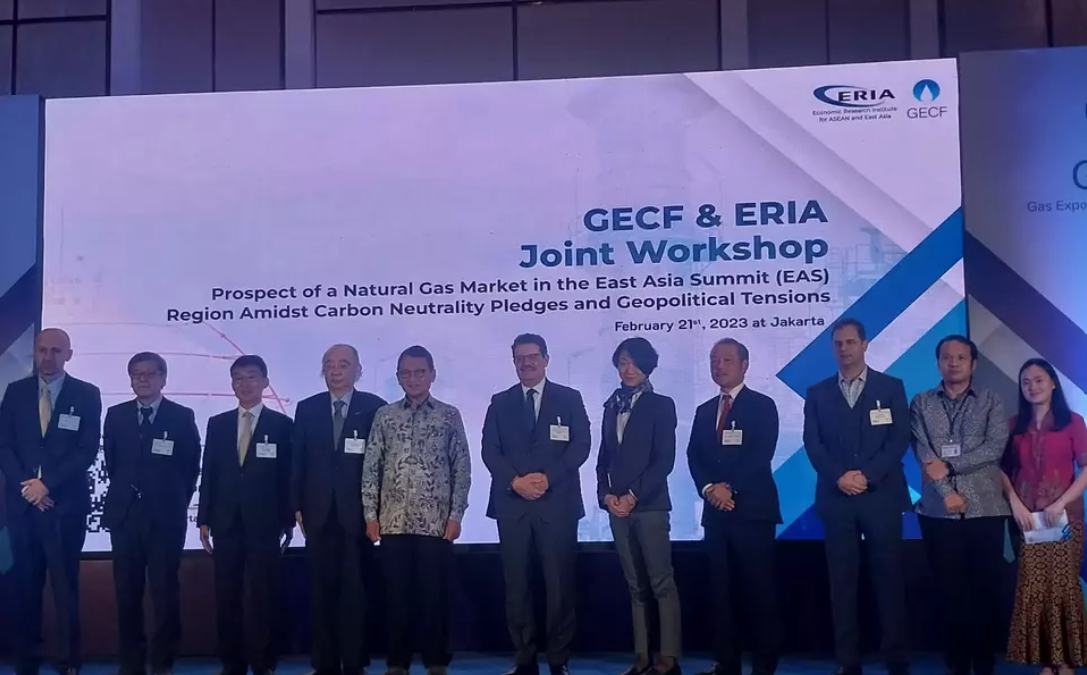JAKARTA – ASEAN will more than double its natural gas demand to 350 billion cubic meters (bcm) by 2050 as the region shifts away from coal-fired power generation, according to the Gas Exporting Countries Forum or GECF.
“Natural gas demand in ASEAN is expected to rise to 350 bcm over the next three decades,” GECF secretary-general Mohammed Hammel said in a forum in Jakarta on Tuesday.
“The region’s share of natural gas in its energy mix is projected to consistently grow to 24 percent by 2050,” Hammel said.
GECF data showed ASEAN’s natural gas demand stood at 160 bcm in 2021. Eighty bcm of the Southeast Asian bloc’s natural gas demand went to power generation. Followed by the industry sector at 50 bcm. These two sectors will continue to take the lion’s share of natural gas demand in 2050. Indonesia, Thailand, and Malaysia also become the largest contributors to the demand.
According to the GECF, ASEAN to this day is still heavily reliant on coal. The combustible black rock represented 24 percent of the region’s energy mix in 2021, but will likely drop to 13 percent in 2050 as the share of cleaner energies grows.
The GECF reported that Thailand was the largest importer of liquefied natural gas (LNG), and will maintain its position over the next decades. ASEAN’s natural gas production will continue to be around 180 bcm in 2050, and the region primarily extracts its gas offshore.
“In the ASEAN region, switching from coal to gas is the low-hanging fruit to improve air quality and reduce greenhouse gas emissions. Natural gas is a partner of renewables, providing backup and stability to power grids,” Hammel said.
If coupled with carbon capture and storage (CCS) technology, natural gas could abate an additional 735 million tons of carbon dioxide emissions just in the power sector alone by 2050, the GECF revealed.
Likewise, Hidetoshi Nishimura, the president of the think-tank ERIA, said natural gas could help the region slash its carbon emission.
“Natural gas can reduce emission via its expanded use in the initial stage of the clean energy transition from 2020 to 2030 by applying existing and affordable fuels, as well as energy technologies. Our report shows the growth rate of electricity generated by natural gas in ASEAN would be stronger than the average electricity generation growth rate,” Nishimura told the same conference.
“In the longer term of 2030-2050, many advanced technologies such as co-firing with hydrogen and CCUS [carbon capture, usage, and storage] will be deployed.”
Many ASEAN member states have set their carbon neutrality targets. For instance, Indonesia aims to become carbon neutral by 2060 or sooner. This is later than Malaysia, Thailand, and Vietnam which have set the deadline to a decade earlier.
The growing energy demand is parallel to ASEAN’s rapid population growth and economic expansion. ASEAN’s real gross domestic product (GDP) is set to triple from $3.1 trillion in 2021 to $10.5 trillion in 2050. Today, ASEAN is home to at least 675 million people, but this figure will jump to 790 million by 2050, the GECF data showed.

